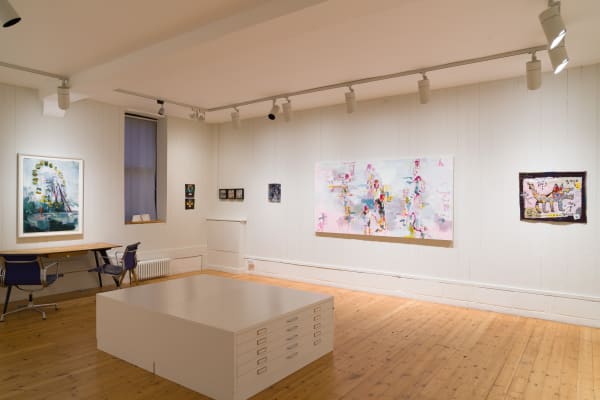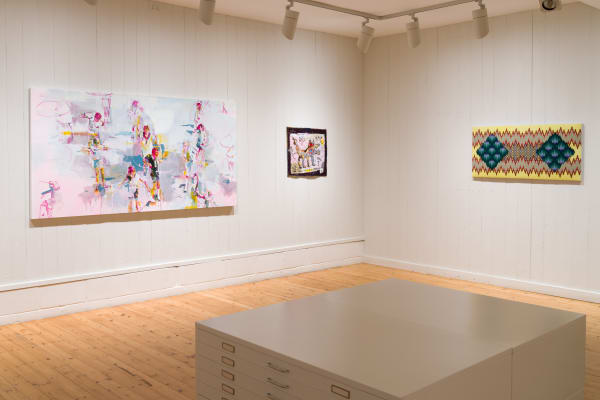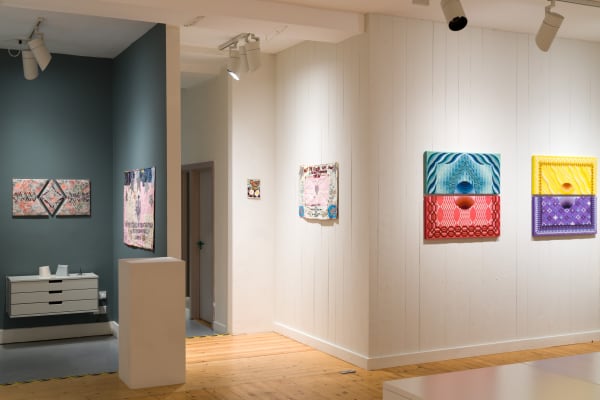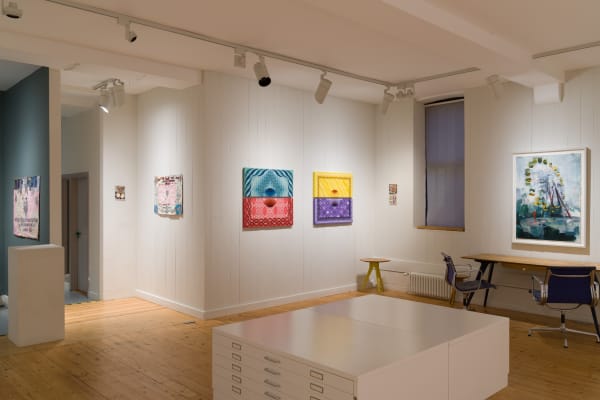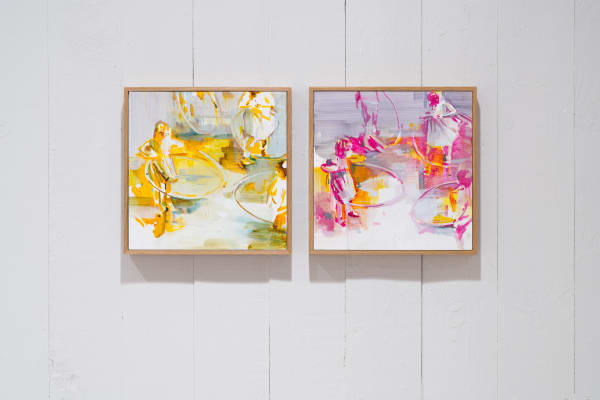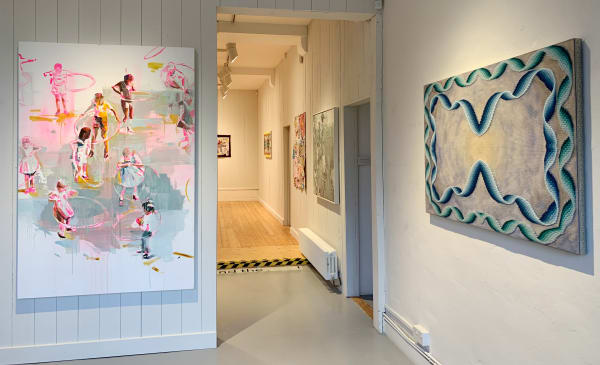Candida Stevens presents three artists who look at history. Katharine Le Hardy explores the cultural heritage of play, recording the most universally enduring childhood games, demonstrating the elemental importance and significance of togetherness. Anthony Stevens, a self-taught artist influenced by Buddhism makes several works inspired by Tibetan Prayer Flags shining a spotlight on the larger cycles of time. Cecilia Charlton explores the history of stitch, working within the lineage of embroidery and needlepoint which extends from prehistory to present-day, often incorporating gold leaf in acknowledgement of the Renaissance and its significance.
According to UNESCO: Heritage is our legacy from the past, what we live with today, and what we pass on to future generations. Our cultural and natural heritage are both irreplaceable sources of life and inspiration.
Folk arts are rooted in and reflective of the cultural life of a community. Below is the summary on Folk Art written by Candida Stevens for the London Art Fair.
Candida Stevens Gallery will be showing work by:
CECILIA CHARLTON;
American artist Cecilia Charlton creates technicolour, highly-patterned textile works that reference personal and cultural histories while questioning notions of medium by bringing together traditions of painting, craft, abstraction, and folk art. Aesthetically revolving around formal references to abstraction, the works’ titles often reveal autobiographical content. Drawing on her upbringing in Corning, New York State, within a family that valued both science and sewing, Cecilia’s artworks combine her personal history with an intuition and passion for abstraction and colour theory. Cecilia’s embroideries build on a family tradition of textile work, a tradition that spreads throughout her genetic relatives on her mother’s side as well as her in-laws. Her grandmother achieved an MA Textiles degree from Wayne University in Detroit in 1951, pioneering for the time.
View Cecilia Charlton's Artsy Viewing Room HERE
KATHARINE LE HARDY;
During the early months of 2020, with access to the physical world restricted by a national lockdown, Katharine Le Hardy found herself absorbed by historical images of past times. Partially induced by memory and partly by nostalgia she started painting historic images of places and children at play. This triggered a new enquiry, an investigation of the space between the real, the past, the lost and the hopeful. Currently documenting deserted funfairs, and researching the history of play, Katharine observes the forlornness of a deserted place of play and how this conflicts with our presupposed associations of jubilance, how our memories entwine with our fantasies. In this work we see a curious balance between the whimsical and the absolute. There is a universal cultural heritage of certain childhood games, amongst the most enduring are the hula hoop, hopscotch, puddles, skipping and balls. The children in Le Hardy’s paintings appear in western style 1920’s clothing emphasising the passage of time. Certain games have been passed down from generation to generation for hundreds of years demonstrating the elemental importance and significance of togetherness and play.
ANTHONY STEVENS;
Anthony Stevens is fascinated and inspired by the spiritual utility that is often infused in traditional folk art. An art form that to his mind is deeply imbued with longing, hope and a great depth of soul. By looking at myths and archetypal figures including Bodhisattva Avalokiteshvara and Persephone and Demeter, as well as considering traditional forms of making such as quilting, Anthony explores the positive potentials that are hidden in the shared human experiences of heartbreak, loss and confusion, potentials that can become manifest in part through the process of art and making, and the comfort it can bring to both maker and observer.
View Anthony Stevens' Artsy Viewing Room HERE
Platform, LAF Edit 2021;
Cultural Heritage is an expression of the ways of living developed by a community and passed on from generation to generation, including customs, practices, places, objects, artistic expressions and values. Culture and its heritage reflect and shape values, beliefs, and aspirations, thereby defining a people's national identity. It is important to preserve our cultural heritage, because it keeps our integrity as a people.
Folk Art is rooted in traditions that come from community and culture. Artists working in the Folk tradition today are telling stories, they are passing on inherited legacies, symbols, characters. The objects may be decorative when once they would have been utilitarian, but the passing on of knowledge remains the same.
Cultural heritage is unique and irreplaceable, which places the responsibility of preservation on the current generation. With global industrialisation, machines replacing the handmade, cultures all over the world are at risk of losing knowledge, skills and cultural heritage. Artists now working in the folk tradition are expressing the importance of their heritage.
Associated Event;
Weds 20th January, 4pm via London Art Fair bookings;
Artist Tag Talk; 5 artists do an online tag interview.
Carol McNicholl - Ceramics (Ting Ying) will open by interviewing
Abe Odedina - Painting (Ed Cross Fine Art) - who in turn will interview
Cecilia Charlton - Textile. ( Candida Stevens Gallery) - who in turn will interview
Denise de Cordova - Wood (jaggedart) - who in turn will interview
Frances Priest - Ceramics (Cavaliero Finn) - who in turn will interview Carol McNicholl.
Platform participating galleries;
Candida Stevens Gallery
Cavaliero Finn
Ed Cross
Gibbons and Nicholas
jaggedart
MADEINBRITALY
OutSideIn
Robert Young Antiques
Ruup and Form
Ting-Ying
Vessel
